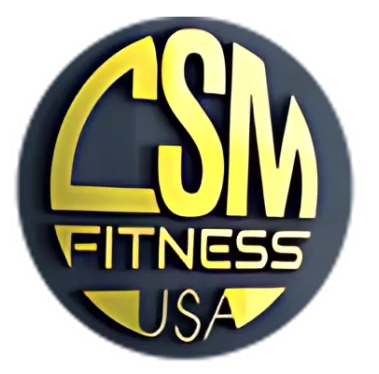BLOG
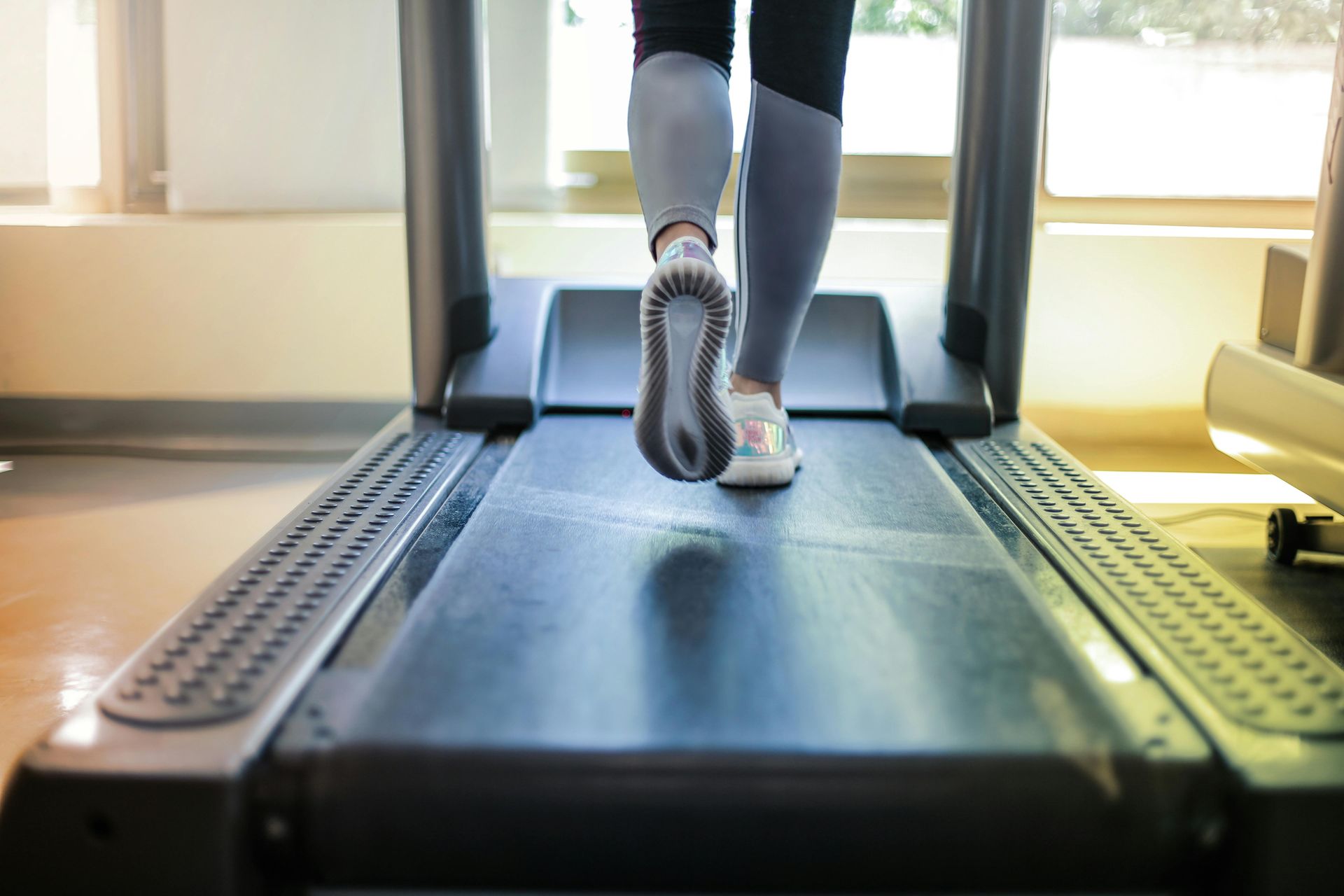
Building the Ultimate Home Gym: 10 Essentials You Shouldn't Miss Creating a home gym is an exciting venture, whether you're transitioning from a commercial gym or starting fresh. With guidance from fitness expert Jose Hernandez of CSM Fitness USA, this article outlines the top 10 essentials for building a functional, durable, and motivating home workout space. Dumbbells or Adjustable Dumbbells 1. A set of dumbbells is the cornerstone of any gym. Adjustable ones are great for saving space, but a full set offers better durability and allows multiple users to train simultaneously. 2. Adjustable Bench A reliable bench transforms your training potential. While some improvise with household items, a sturdy, adjustable bench provides both safety and versatility, making it a must-have. 3. Power Rack or Half Rack Essential for heavy lifting, a rack supports squats, bench presses, and more. Choose one based on your room height and training goals. Foldable racks offer convenience for smaller spaces. 4. Barbell and Weight Plates You can't utilize your rack fully without a barbell and plates. Whether bumper or steel, select weights based on your training style. Investing here enhances your strength training dramatically. 5. Resistance Bands Affordable and effective, resistance bands expand your exercise variety. They’re excellent for warm-ups, mobility, and resistance training, all without taking up space. 6. Kettlebells Kettlebells are versatile tools for dynamic movements like swings and snatches. A small variety can add significant range to your workouts. 7. Cardio Equipment Treadmills, rowers, bikes—you pick. Adding one cardio machine complements your strength training and supports heart health. 8. Pull-Up Bar A pull-up bar builds upper-body strength and can double up for accessories like TRX straps. If not built into your rack, a doorway model works too. 9. Flooring Often overlooked, proper flooring adds comfort, reduces noise, and protects your equipment. Rubber mats or tiles are preferable over foam, especially in high-impact zones. 10. Storage Solutions An organized gym is a usable gym. Use racks for dumbbells, barbells, and kettlebells to keep your space clean, safe, and inviting. With these essentials, your home gym can be a professional-grade fitness haven that keeps you motivated and consistent.
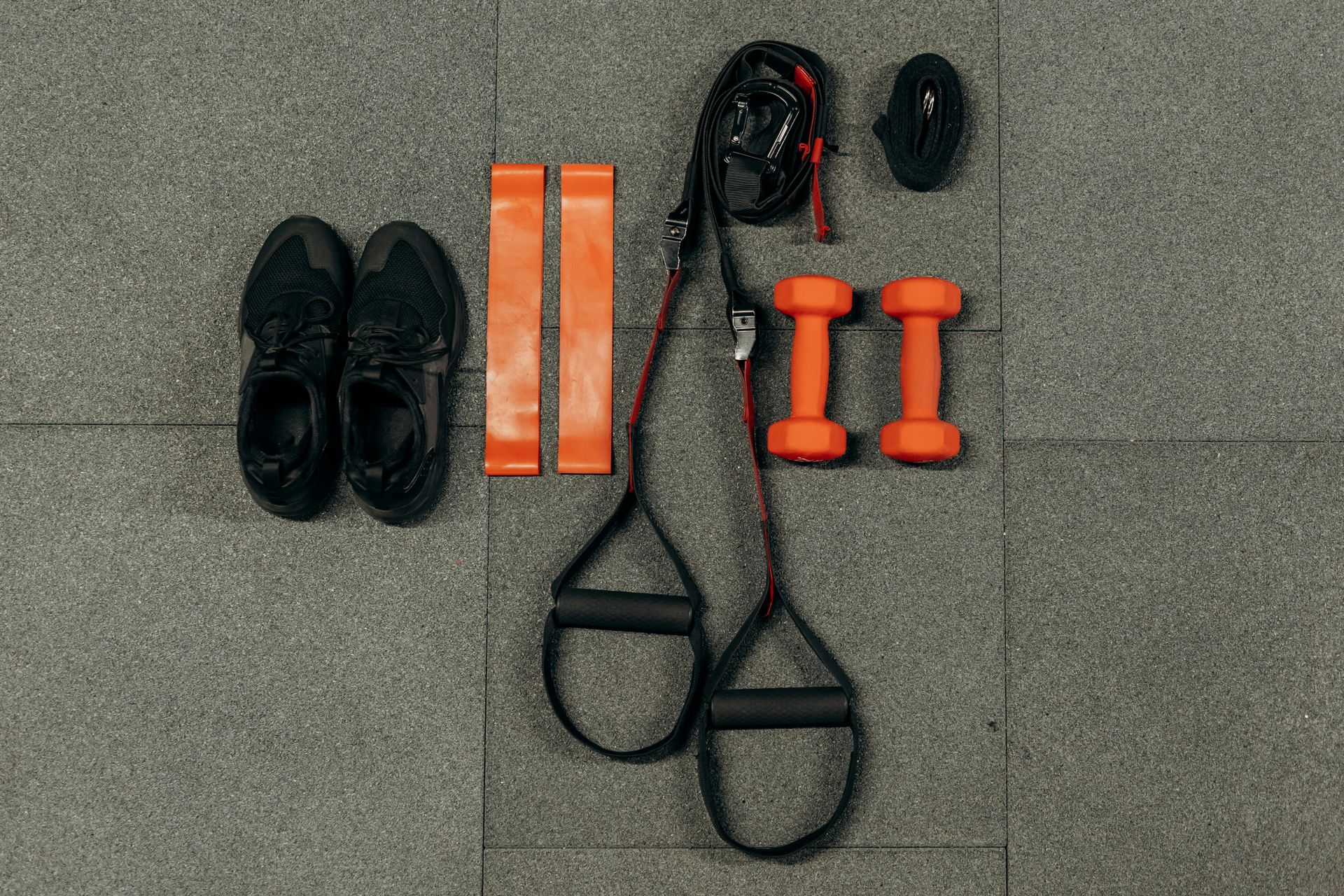
I was sitting in my office thinking about adding a piece of equipment and realized that with the right choices, even a small space can accommodate a versatile setup. That got me thinking about the best multi-functional gym equipment that maximizes efficiency while saving space. If you're limited on room, here’s my top list of must-have equipment to get the most out of your space. 1. Functional Trainer I've talked about this piece at length, but it truly is an absolute space saver. Many would argue that a functional trainer is all you need to get a full-body workout in a compact space. With its dual pulley system and endless exercise variations, this machine is a game-changer for small home gyms. 2. Fold-Up Half Rack A foldable half rack is an excellent space-saving option—just ensure you have the ceiling clearance before purchasing. When not in use, it folds neatly against the wall, keeping your space open. (Pro tip: Measure your ceiling height before purchasing to ensure proper fitment.) 3. Leg Press/Hack Squat Combo If lower-body training is a priority, this combo machine is a must-have. It combines two effective leg exercises into one unit, saving you both space and money. (Pro tip: Not all leg press/hack squat combos are created equal—quality varies, so shop smart. A lower price doesn’t always mean better value.) 4. Resistance Bands If you’re really tight on space, a good set of resistance bands is a fantastic alternative. They offer an incredible variety of exercises without taking up much room. Plus, they’re portable and can provide similar resistance to traditional free weights. If you don’t have space for dumbbells, bands are an excellent option to keep your workouts versatile and effective. 5. Accessories Having a variety of small accessories can make a big impact in a compact gym. Medicine balls, kettlebells, stability balls, push-up stands, and TRX straps don’t take up much space but add a ton of variety to your workouts. The best part? You can store them in a closet or corner and pull them out when needed. Final Thoughts These are my top five space-saving gym equipment choices. Just because you're limited on space doesn't mean you have to compromise on your workouts. With the right equipment, you can create a highly functional workout area without sacrificing performance or variety. Investing in versatile, space-efficient gear will help you stay consistent and make the most of your available space.
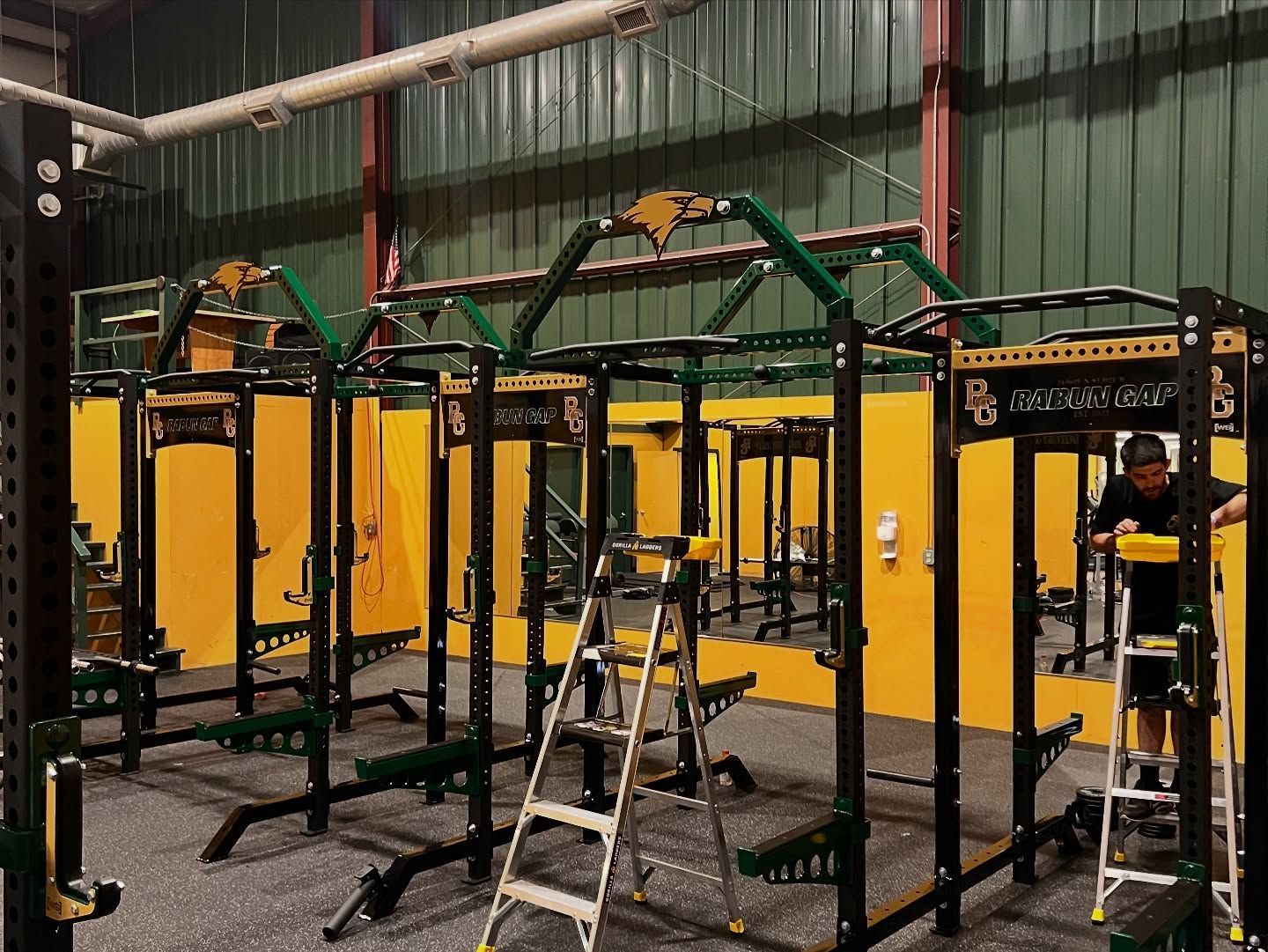
We’ve Moved! Welcome to Our New Location We’re excited to announce that we’ve officially moved into our new location, just a few minutes down the road from our previous spot. After a challenging but rewarding three-month journey, we’re thrilled to begin this new chapter for CSM Fitness USA. While I have fond memories of our old building, we had outgrown it—not necessarily in square footage but in functionality. The new space better aligns with our vision for the future and provides the tools we need to continue growing and serving our customers. Challenges and Growth The transition wasn’t without its challenges. One of the toughest decisions I faced was parting ways with two key team members who were resistant to the changes CSM is undergoing. Letting go of people who have been part of the journey is never easy, especially when they’ve contributed to the company’s ups and downs. However, their resistance was holding us back, and for the sake of progress, tough calls had to be made. Additionally, juggling high-profile jobs while training new team members during the move added to the complexity. Although the new location is only a short distance away, coordinating the logistics was no small feat. But we’re here now, and the effort was well worth it. A Space Designed for Our Future Our new facility offers significant improvements, including climate control for year-round comfort—an essential feature for combating harsh winters and scorching summers. We’ve also created a welcoming office space where customers can sit down and have meaningful conversations in a comfortable environment. This move reflects how our business has evolved. What started as a wholesaler and flipper of used fitness products has grown into a company offering moving, installations, sales, and repair services for both new and used equipment. These expanded services shaped the type of space we needed to support our growth and better serve our customers. Building for Success This new location is more than just a workspace—it’s the foundation for the next phase of our journey. It will allow us to grow our internal team, improve backend operations, and enhance our ability to support road teams and customers alike. With more responsibilities comes a greater need for efficiency, and we’re committed to meeting and exceeding expectations.
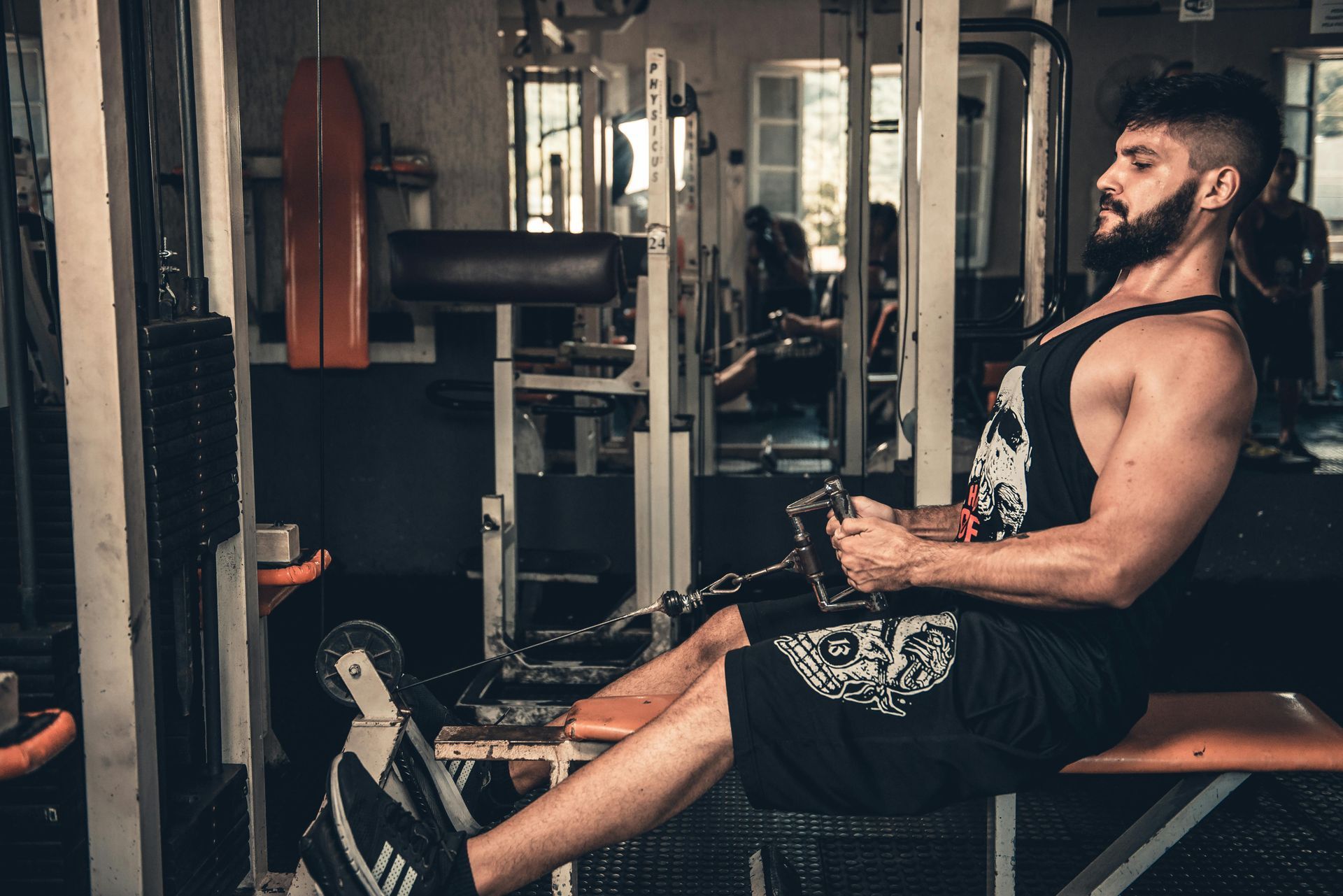
Yesterday, I had an interesting conversation with a customer who stopped by to pick up a piece of equipment for their home gym. As we talked about the local gym scene, we came to a shared realization: our demographic—let’s call it the 35-50 crowd—is underserved. The gyms in our area seem to cater primarily to two extremes. On one end, you have facilities packed with the younger crowd, thriving on "Fitfluencer" and "Gym Bro Culture," complete with crowded spaces and cameras everywhere. On the other end, there are gyms designed for the older, retired audience, like the YMCA or Health Tracks, which typically feature pools and classes. While these can work for people in our age group, they often feel like a hit-or-miss option. This got me thinking about how gym culture has evolved over the years—both the good and the bad—and what trends we might see moving into 2025 and beyond. The Positives: What’s Working Well in Gym Culture 1. The Rise of Boutique Fitness Studios Boutique gyms have been a game-changer for people like us. These smaller, specialized spaces offer a personal connection with ownership, a cool vibe, and an experience that feels like it has a soul. While the costs are often higher than larger gym chains, the blend of amenities and personal touch makes them worth it. 2. The Role of Technology Connected fitness products, which became a lifeline during the pandemic, have not only stuck around but evolved significantly. We’ve moved beyond just spin classes to full ecosystems that integrate seamlessly into our lifestyles. The options today are vast, accommodating a variety of workout styles and preferences without compromise. 3. The Focus on Recovery Recovery has exploded in popularity and is quickly becoming a standard in the fitness world. Cold plunges and saunas, once niche offerings, are now essential features in new gyms and fitness facilities. Even home fitness enthusiasts have adopted recovery tools, with the industry responding by creating a wide range of accessible solutions for personal use. 4. Strength Training is Back Strength training has seen a massive resurgence. Barbells and free weights are no longer just for the hardcore lifter; they’re now recognized as essential tools for longevity and overall health. Women, in particular, have embraced weightlifting, breaking down stereotypes and proving that strength training is for everyone. 5. The Growth of Supplementation Supplementation has advanced significantly, offering products that can genuinely elevate fitness levels when used correctly. While not without controversy, the availability of tailored supplements for different fitness goals has made supplementation a staple for many gym-goers. The Negatives: Trends That Need Improvement 1. Misinformation in Supplements Not all supplements are created equal. Many products lack scientific backing and make misleading claims that can waste money—or worse, harm your health. The influence of social media only exacerbates the issue, as influencers profit from promoting questionable products. Always do your research and consult reputable sources before adding supplements to your routine. 2. The Pump Cover Trend Pump covers started as a practical gym accessory but have morphed into a stereotype. While the concept of warming up in oversized clothes and then “revealing” your pump is understandable, it’s become a theatrical trend. Paired with some of the more outlandish gym outfits we see today, it often feels more performative than functional. 3. The Glute Obsession Ladies, there’s no need to train glutes four days a week. The hyper-focus on glute development has reached obsession levels, with entire gym equipment lines now dedicated to this single muscle group. While there’s nothing wrong with wanting strong glutes, the Instagram-driven fixation on showcasing them mirrors the classic "bicep shot" cliché among men. Balance is key! Closing Thoughts Gym culture has come a long way, evolving in exciting ways while grappling with its share of challenges. For every boutique gym or recovery tool that enhances the experience, there’s a trend like misinformation in supplements or the over-the-top glute obsession that can detract from the true spirit of fitness. At the end of the day, fitness should be about personal growth, health, and empowerment—not keeping up with fads or chasing unattainable standards. As we move into 2025 and beyond, let’s focus on embracing the positives, addressing the negatives, and creating a gym culture that works for everyone.

Imagine a healthcare system that not only treats illness but actively helps prevent it. One of the simplest and most effective ways to promote health is through regular exercise, yet many people face barriers to accessing gyms or fitness programs. Covering gym memberships as part of health insurance plans could change that, making preventive care accessible while reducing long-term healthcare costs. Here’s why this approach makes sense, how exercise can even replace some medications, and tips to take advantage of fitness-related benefits. 1. The Case for Including Gym Memberships in Health Insurance Exercise is often called “medicine” for a reason. It’s been shown to: Lower the risk of chronic diseases such as diabetes, heart disease, and obesity. Improve mental health by reducing symptoms of anxiety and depression. Enhance overall quality of life, boosting energy and mood. In some cases, exercise can replace or reduce the need for certain medications, offering a natural, side-effect-free approach to managing health. From a financial perspective, gym memberships cost far less than managing preventable conditions. For example, regular exercise can reduce the need for medications or frequent doctor visits, translating to significant savings for both individuals and insurers. 2. Exercise as a Substitute for Medications One of the most compelling reasons to advocate for gym membership coverage is that exercise can, in some cases, act as a direct substitute for medications. Here are a few examples: Mental Health : Regular physical activity can reduce symptoms of depression and anxiety, sometimes matching the effectiveness of antidepressants for mild to moderate cases. Hypertension : Aerobic exercise like walking or swimming can lower blood pressure, reducing or eliminating the need for medication in some individuals. Diabetes Management : Exercise improves insulin sensitivity and helps regulate blood sugar, potentially delaying or preventing the need for medication in prediabetic or early-stage diabetic patients. Pain Relief : Low-impact exercises like yoga or swimming can alleviate chronic pain conditions, reducing the need for painkillers or anti-inflammatory drugs. Sleep Disorders : Regular exercise can improve sleep quality and duration, helping some people reduce or stop using sleep aids. 3. What’s Already Happening in Healthcare Some health insurance providers are already offering fitness-related benefits, recognizing the value of preventive care. For example: Medicare Advantage Plans : Programs like SilverSneakers and Silver&Fit provide free or discounted gym memberships to seniors. Private Insurance Discounts : Companies like Aetna and Blue Cross Blue Shield offer fitness reimbursements or discounts through wellness initiatives. Employer Wellness Programs : Many employers incentivize exercise by subsidizing gym memberships or offering wellness rewards. 4. Tips to Take Advantage of Gym Membership Benefits If you’re interested in making fitness a part of your healthcare routine, here’s how to tap into existing benefits or advocate for them: Check Your Insurance Policy : Review your plan for wellness benefits like fitness reimbursements or discounts. Ask Your Doctor : Discuss your health goals and request an exercise prescription if it aligns with your treatment needs. Contact Your Insurer : Inquire about fitness programs, and if they don’t offer one, advocate for its inclusion. Leverage Employer Benefits : Explore wellness incentives or pre-tax options like FSAs/HSAs for fitness expenses. 5. What If Your Insurance Doesn’t Cover Fitness? If gym membership benefits aren’t included in your plan, consider these alternatives: Look for discount programs through local gyms or community organizations. Explore affordable or free fitness options at YMCAs or public parks. Use fitness apps or online programs as cost-effective substitutes. Conclusion Exercise isn’t just about building strength or losing weight—it’s a powerful tool for managing and even reversing certain health conditions. Including gym memberships in health insurance plans could empower individuals to take charge of their health while significantly reducing healthcare costs. Whether you’re looking to prevent chronic disease, manage existing conditions, or simply improve your overall well-being, now is the time to explore how fitness can fit into your healthcare journey. Have you benefited from exercise as part of your treatment plan? Or do you wish your health insurance covered gym memberships? Share your thoughts and experiences in the comments below!
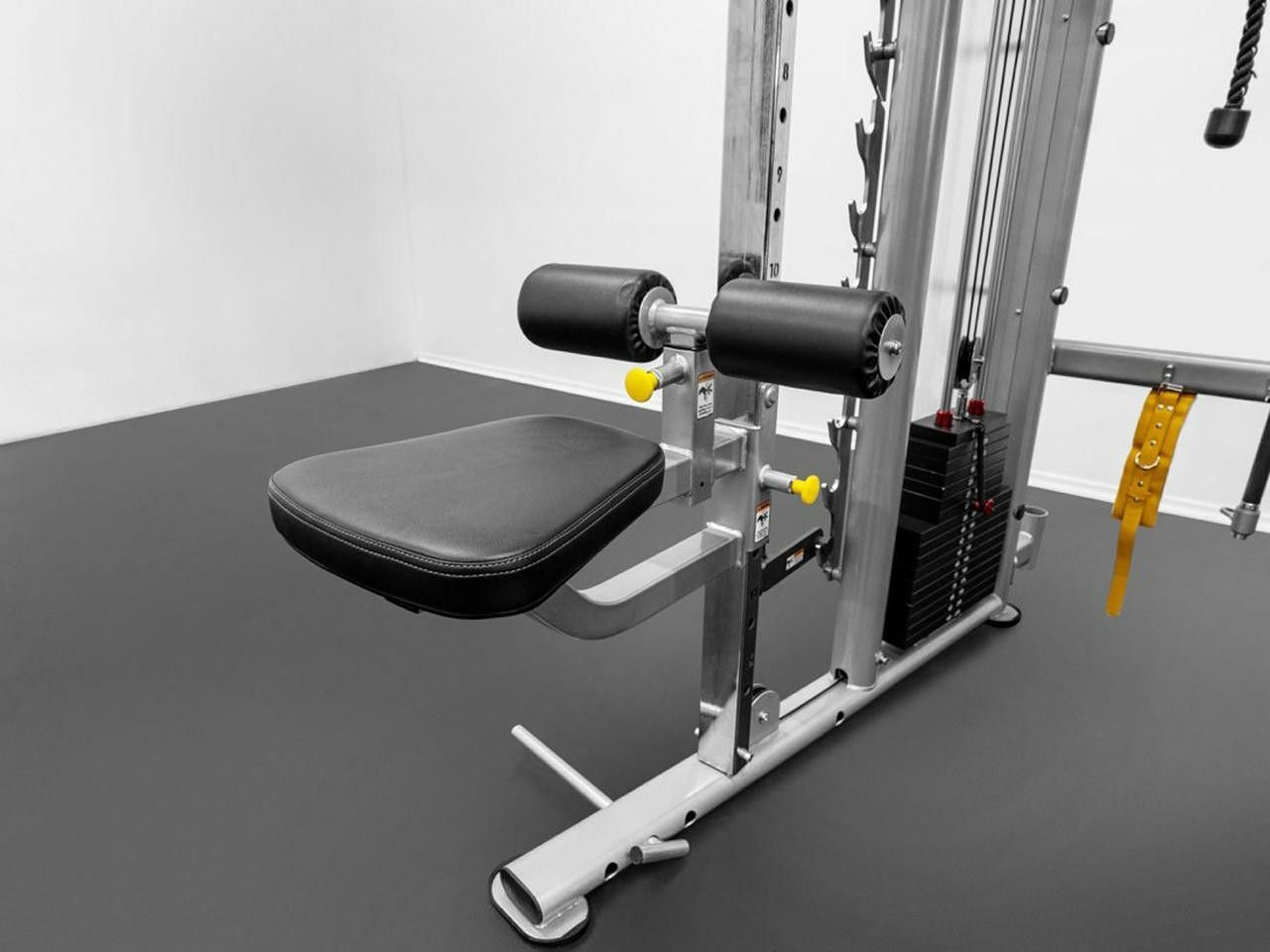
Introduction: "I’m Jose Hernandez, owner of CSM Fitness USA, and for the past four years, I’ve proudly sold BodyKore products. Over this time, I’ve come to appreciate BodyKore as more than just a fitness equipment brand—it’s a small but mighty boutique company based in Southern California that’s making a name for itself in the fitness industry. I first came across BodyKore at the IHRSA conference in San Diego in 2020. Their designs and approach to fitness equipment caught my eye right away. I had the chance to test their products and connect with the team, including the owner, Leo. Their focus on innovation without overhauling what works felt refreshing. Instead of constantly changing products just to follow trends, BodyKore makes thoughtful updates where they see a real need, filling gaps with purpose. I was impressed by both the quality and the pricing of BodyKore’s equipment. They offer commercial-grade durability and smart designs at an accessible price point, making their products a win-win for any gym or home setup." The Origins of BodyKore: Quality Fitness Equipment from California "BodyKore was established in 2005 in Los Angeles, California, with a mission to design top-tier fitness equipment that meets the needs of both professional athletes and everyday fitness enthusiasts. Over the years, they’ve expanded globally, making their mark across multiple continents. BodyKore’s growth has been driven by a dedication to innovation, quality, and a passion for improving the fitness experience. From the beginning, BodyKore aimed to provide commercial-grade equipment that’s also accessible to home users. Their commitment to blending functionality with a sleek, modern aesthetic has attracted fitness centers, rehab facilities, and personal gyms alike. Today, they’re recognized as a go-to brand for those who want reliability and innovation without the frills." What Sets BodyKore Apart from Other Fitness Equipment Brands "What truly sets BodyKore apart is their commitment to smart, purposeful innovation. In an industry where it’s easy to get caught up in constantly redesigning equipment, BodyKore takes a different approach. They don’t reinvent the wheel—they refine it. They identify areas where improvements can genuinely enhance the user experience, whether it’s in biomechanics, durability, or ease of use, and focus their energy there. This approach results in equipment that’s both reliable and thoughtfully designed, without unnecessary complexity. BodyKore’s product line also emphasizes ergonomics and durability, two factors that are critical for both gym owners and home users. Their machines are built to handle the wear and tear of daily use, ensuring a long lifespan and reliable performance. From functional trainers to strength machines, every piece reflects their attention to detail and quality. It’s this focus on essential innovation that has earned them a loyal customer base, and it’s a big reason why I continue to recommend BodyKore to my clients." My Personal Experience with BodyKore Equipment "As someone who’s been in the fitness equipment industry for years, I’ve had the opportunity to work with a wide variety of brands. BodyKore, however, has stood out consistently. Over the past four years, I’ve sold their equipment to a range of clients, from commercial gyms to individual home users, and the feedback has been overwhelmingly positive. One thing I often hear from clients is how impressed they are with the balance BodyKore strikes between quality and cost. They love that they’re getting commercial-grade equipment without the inflated price tag. And from a practical standpoint, I can attest to the durability and performance of BodyKore’s machines—they hold up exceptionally well, even with frequent, intense use. In fact, I have several BodyKore pieces in my own personal gym that I use frequently. As a regular user myself, I can say that their attention to ergonomic and biomechanical design makes a noticeable difference. It’s clear that BodyKore equipment is built to support both comfort and safety, whether it’s during heavy lifts or functional training exercises. This focus on user experience is part of what makes BodyKore such a reliable choice for anyone serious about fitness." BodyKore’s Commitment to Quality and Customer Satisfaction "One of the things I admire most about BodyKore is their commitment to quality and customer satisfaction. They go beyond simply providing fitness equipment—they’re dedicated to supporting their customers throughout their fitness journeys. BodyKore actively engages with users, listening to feedback and continuously improving their designs and offerings based on real-world needs. This commitment to service has been evident in my own experience with BodyKore. Whenever I’ve had a question or needed support, their team has been quick to respond and eager to help, which makes a big difference in this industry. Knowing that I can rely on BodyKore not only for quality equipment but also for reliable support gives me confidence in recommending their products to my clients. It’s clear that they’re invested in building lasting relationships with their customers, which is rare and valuable in the fitness equipment world." Conclusion: Partnering with BodyKore for Future Fitness "In my years in the fitness equipment industry, I’ve come across a variety of brands, but BodyKore stands out for all the right reasons. Their dedication to quality, their thoughtful approach to innovation, and their commitment to customer satisfaction make them a brand I trust and highly recommend. Whether you’re outfitting a commercial gym or looking to create an inspiring home workout space, BodyKore offers equipment that’s both reliable and built to enhance the fitness experience. As both a seller and user of BodyKore products, I can confidently say that their equipment is a solid investment for anyone serious about fitness. BodyKore isn’t just a brand—they’re a partner in achieving your fitness goals. So, if you’re looking to elevate your workout space with equipment that combines durability, design, and value, consider BodyKore. I’m proud to have them as part of my personal and professional journey, and I believe they can be a great fit for yours too."
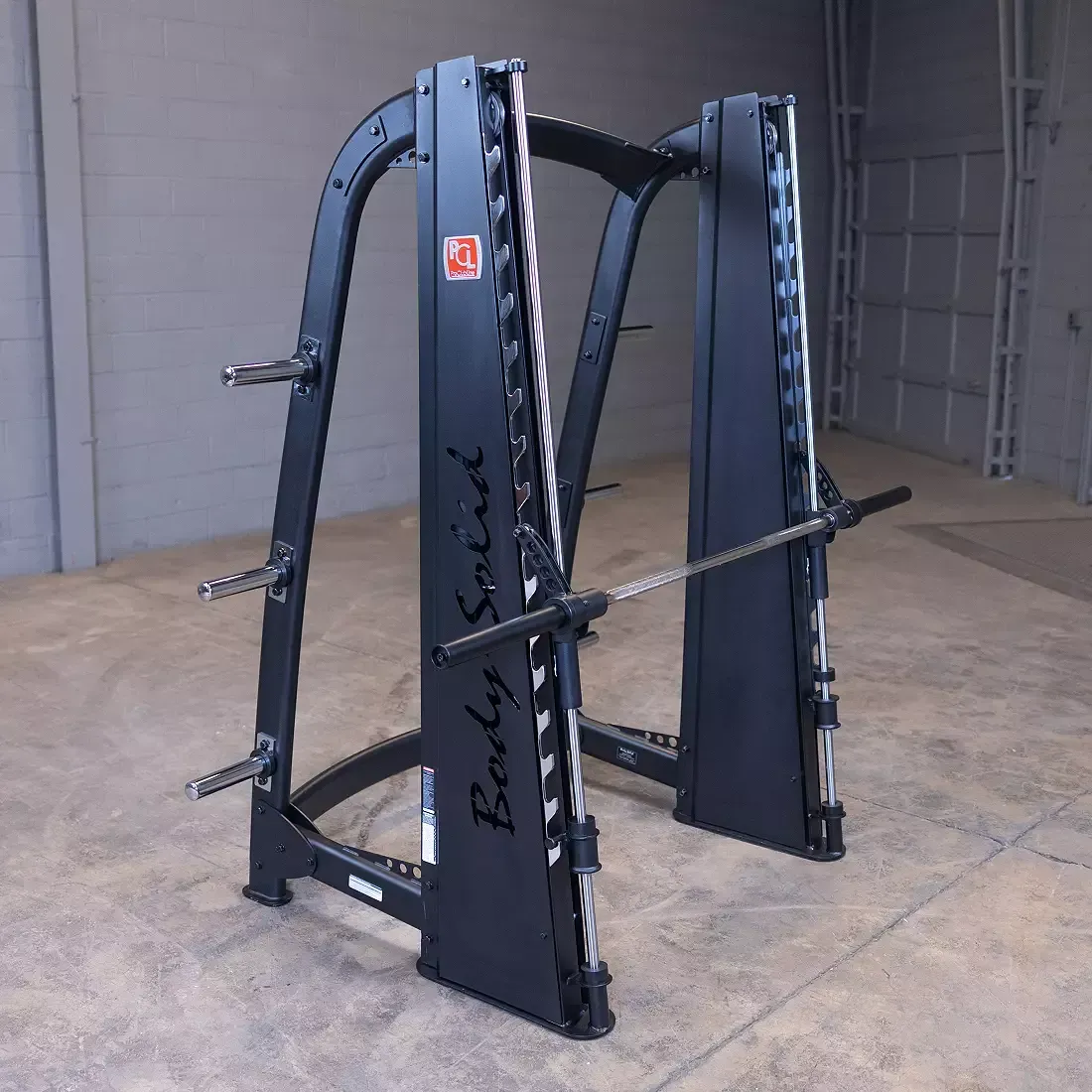
When it comes to strength training equipment, the Smith machine has long been a staple in gyms for its versatility, safety, and ability to support users of all experience levels. But not all Smith machines are created equal. The introduction of counterbalanced and angled Smith machines offers new advantages for fitness enthusiasts, making them a perfect addition to any home gym or commercial facility. At CSM Fitness USA, we are dedicated to offering top-tier fitness equipment that aligns with the needs of both beginners and seasoned athletes. In this blog post, we’ll dive into the benefits of counterbalanced and angled Smith machines, along with a brief history of how this essential piece of equipment came to be. The History of the Smith Machine The Smith machine was originally invented by fitness pioneer Jack LaLanne in the 1950s. LaLanne, widely known as the "Godfather of Fitness," had a vision of creating a piece of equipment that would allow individuals to lift weights safely and without needing a spotter. He designed the early version of the Smith machine with a guided bar that moved on a fixed vertical plane. However, it was Rudy Smith, a gym owner and fitness enthusiast, who saw the true potential of LaLanne’s design. Smith worked to refine and popularize the concept, eventually bringing it to gyms across the country. Thanks to his efforts, the machine became widely known as the Smith machine, and it has since become a mainstay in both commercial and home gyms around the world. Today, Smith machines have evolved significantly, incorporating innovations like counterbalancing mechanisms and angled tracks that provide even more benefits for lifters of all levels. What is a Counterbalanced Smith Machine? A counterbalanced Smith machine includes a built-in system of weights or springs that reduces the starting weight of the barbell, often making it feel nearly weightless. This allows users to start lifting with less strain, making it ideal for those who are new to strength training or are recovering from an injury. The counterbalance helps you focus on form and movement without worrying about the bar's weight itself. Key Benefits of a Counterbalanced Smith Machine Controlled Movements for Enhanced Safety The Smith machine's guided bar ensures you move in a controlled, linear path. This reduces the risk of injury, especially when performing compound lifts like squats or presses. For beginners or those lifting solo, this added control can make all the difference in safely pushing limits. Perfect for All Fitness Levels Whether you're new to lifting or a seasoned pro, the counterbalanced feature helps you progress gradually. Users can start with lighter loads and safely increase the weight as their strength improves, allowing for consistent gains without overwhelming the body. No Need for a Spotter One of the major advantages of the Smith machine is its built-in safety. With lockout points along the vertical path, you can easily "rack" the bar by twisting it at various heights, meaning there’s no need for a spotter. This is especially useful for anyone working out alone or for gyms where access to personal trainers or workout partners may be limited. The Advantage of an Angled Smith Machine Some Smith machines, including those offered by premium manufacturers, come with a slightly angled track. Unlike traditional Smith machines that move the bar in a strictly vertical path, the angled version follows a more natural movement pattern. Typically, this slight forward or backward tilt is designed to better align with your body's biomechanics. Why Opt for an Angled Smith Machine? Mimics Natural Movements The angled bar path better reflects the way your body naturally moves during exercises like squats or bench presses. For example, when squatting, your hips naturally move backward, and an angled machine can follow that motion more closely, reducing strain on the knees and lower back. Improves Muscle Targeting The slight tilt helps emphasize different muscle groups depending on the exercise. For example, angled squats can better activate your glutes and hamstrings, while angled bench presses help recruit the pectorals and shoulders more effectively. Reduced Joint Strain By allowing your body to move in a more natural path, the angled design can reduce stress on your joints. This is particularly helpful for those recovering from injuries or with joint issues, making the Smith machine a more comfortable and accessible option for all types of lifters. Versatility for Various Exercises From squats and lunges to bench presses and rows, the angled Smith machine can handle a variety of exercises while keeping your movements stable and controlled. It’s a true multipurpose piece of equipment, perfect for maximizing space in a home gym or catering to multiple clients in a commercial setting. Why Add a Counterbalanced and Angled Smith Machine to Your Gym? At CSM Fitness USA, we believe in equipping our clients with the best fitness tools available. A counterbalanced and angled Smith machine brings the perfect blend of safety, versatility, and functionality. Here’s why it’s a smart investment for any gym: Safe for Beginners: Its guided path and counterbalanced bar make it ideal for those just starting out or returning to fitness after a break. Great for Experienced Lifters: The ability to lift heavy without a spotter, combined with the machine’s natural movement pattern, allows experienced users to push themselves safely. Versatile Equipment: It accommodates a wide variety of exercises, targeting both upper and lower body muscles effectively. Joint-Friendly: The angle helps protect the knees, back, and shoulders, providing a smoother, more natural lifting experience. Ready to Level Up Your Gym? Whether you’re a fitness enthusiast looking to upgrade your home gym or a commercial facility owner seeking the latest in strength training equipment, a counterbalanced and angled Smith machine is a must-have addition. Its versatility and safety features can accommodate everyone, from casual lifters to advanced athletes. At CSM Fitness USA, we carry a range of high-quality Smith machines to fit your gym’s unique needs. Contact us today to learn more about the models we offer and how they can help your clients achieve their fitness goals safely and efficiently.
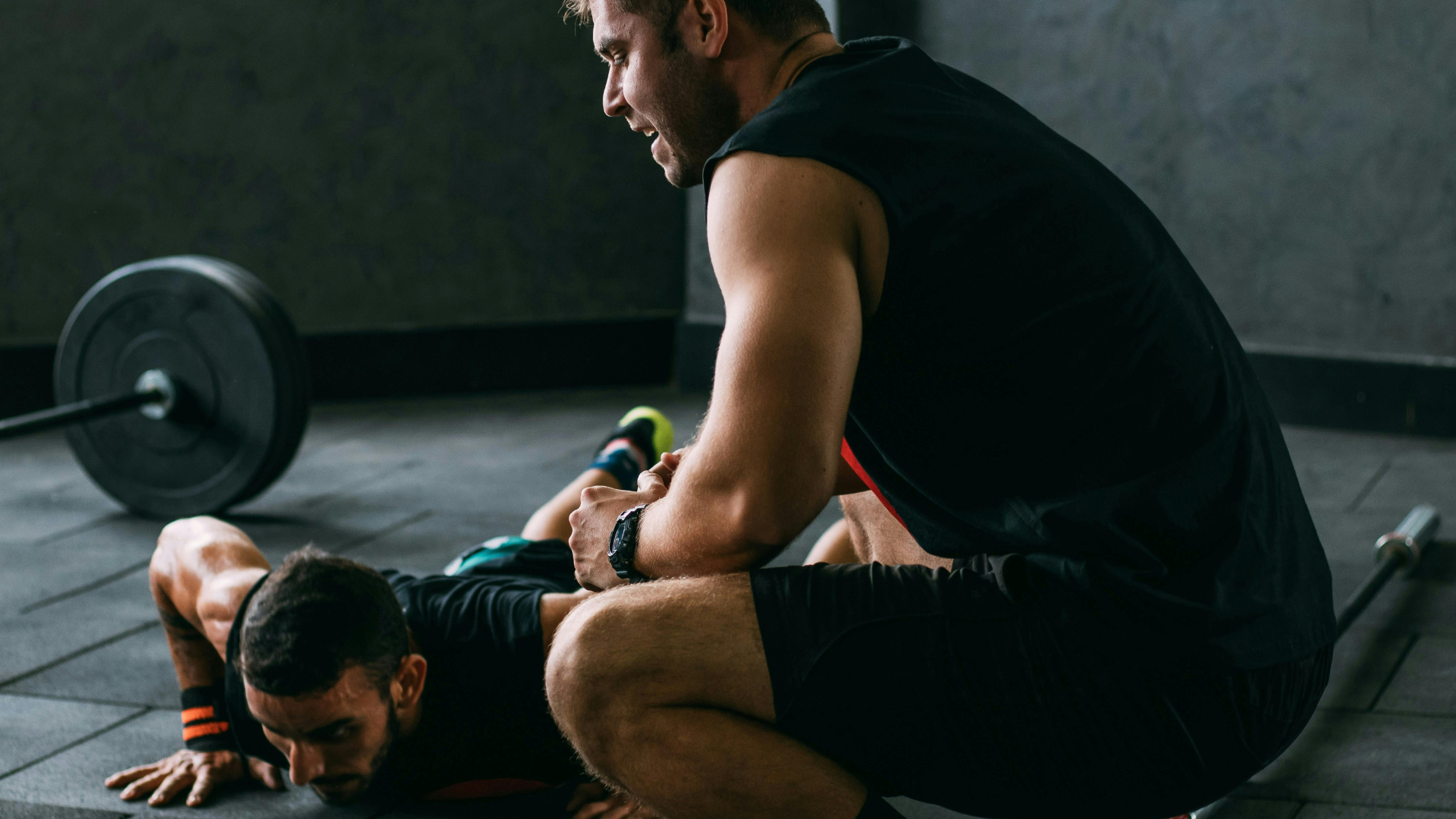
Starting a fitness journey often comes with high levels of motivation and enthusiasm. But as the weeks go by, it’s not uncommon to see that initial spark fade. At CSM Fitness USA, we recognize the challenge of sticking to your fitness goals long-term and the importance of staying engaged. Whether you’re a new gym member or working with a personal trainer, avoiding gym burnout is essential for success. Understanding the Gym Burnout Rate For many gym-goers, the excitement of starting a new routine can wear off quickly. Studies show that as many as 50-60% of new members stop attending within the first six months. This phenomenon, known as the "gym burnout rate," is a key issue many gyms and fitness enthusiasts face. But what causes this burnout, and how can you avoid it? Common Reasons for Gym Burnout: Unrealistic Expectations: Many people set ambitious goals when they first join a gym, expecting quick results. When they don’t see immediate changes, frustration can set in, leading them to quit. Lack of Structure: Without a clear plan or routine, it’s easy to lose focus. People often feel lost or unsure of what to do, causing their motivation to fade. Plateauing: Progress can sometimes stall, especially if workouts become repetitive. Hitting a plateau can be discouraging, leading to a drop in attendance. Lack of Accountability: Without someone to encourage and guide you, it’s easy to skip workouts. Many members fail to engage with trainers or gym staff who can help keep them accountable. How to Beat Gym Burnout The good news is that gym burnout is avoidable with the right strategies! Here are some tips to help you stay on track and committed to your fitness goals: Set Realistic Goals: Break your larger fitness goals into smaller, manageable milestones. Celebrate each achievement to keep yourself motivated. Build a Routine: A structured workout plan is key to long-term success. Whether it’s working with a trainer or following a personalized program, having a plan will keep you focused. Vary Your Workouts: To prevent hitting a plateau, switch up your routine regularly. Try different types of exercise, including strength training, cardio, and group classes, to keep things fresh. Leverage Connected Gym Products from Echelon: One of the most effective ways to stay engaged is by using connected gym products like those offered by Echelon, available through CSM Fitness USA. Echelon’s cutting-edge fitness equipment, such as their Echelon Connect Bikes, Smart Rowers, and Reflect Touch smart mirrors, provide real-time data on your workouts, track progress, and offer personalized classes. These products make fitness more interactive, helping you stay accountable and motivated by offering tailored workout plans, live and on-demand classes, and the ability to compete with others through leaderboards. This engagement can significantly reduce the gym burnout rate. Consider Personal Training: Personal trainers can significantly reduce your chances of burning out. At CSM Fitness USA, our certified trainers offer personalized attention, guidance, and accountability, helping you stay engaged and motivated. Trainers also benefit from connected gym products, which provide data-driven insights to customize workouts and track your progress. Additional Ways Personal Trainers Can Prevent Burnout : Beyond offering structured workouts, personal trainers have a unique ability to address the mental and emotional aspects of gym burnout. Here’s how they can help: Focus on Mental Health and Well-being: Trainers can incorporate mindfulness practices, such as meditation or breathing exercises, to help clients manage stress and feel more centered in their fitness routine. This holistic approach helps prevent mental burnout. Regular Check-ins and Adjustments: Frequent communication between the client and trainer is key. Regular check-ins can help identify any frustrations or concerns early, allowing trainers to adjust workout plans accordingly and keep clients on track. Add a Social Element: Personal trainers can encourage group training sessions or fitness challenges, adding a fun, social element to workouts. This creates a sense of community and friendly competition, which can boost motivation. Educate Clients on Recovery and Rest: Trainers should teach clients the importance of recovery, incorporating active rest days or lighter workout sessions. Proper recovery prevents overtraining, keeping clients engaged long-term without physical or mental fatigue. Periodization of Workouts: Trainers can plan workout phases that alternate between high-intensity and lighter phases, ensuring that clients experience continuous progress without burnout. Celebrate Non-Scale Victories: Focusing on small achievements—like improved stamina, better mood, or increased flexibility—keeps clients motivated and helps shift the focus away from just weight loss. Keep Sessions Fun and Fresh: Personal trainers should incorporate variety into workout sessions, such as outdoor activities, fitness games, or new equipment, to prevent clients from getting bored. What About Personal Training Clients? Interestingly, personal training clients have a lower burnout rate compared to general gym members. This is because personal trainers provide structured workouts, track your progress, and offer the necessary motivation and variety to prevent burnout. However, like gym members, personal training clients are not immune to burnout. The first 3-6 months are crucial for personal training retention, as clients need to see progress and feel engaged. How Trainers Keep Clients on Track: Tailored Workouts: Personal trainers can use data from connected gym products, such as those from Echelon, to offer highly personalized routines that keep clients challenged and engaged. Constant Feedback: With real-time tracking and progress monitoring, trainers can adjust workouts to ensure clients continue to see improvements and don’t hit plateaus.
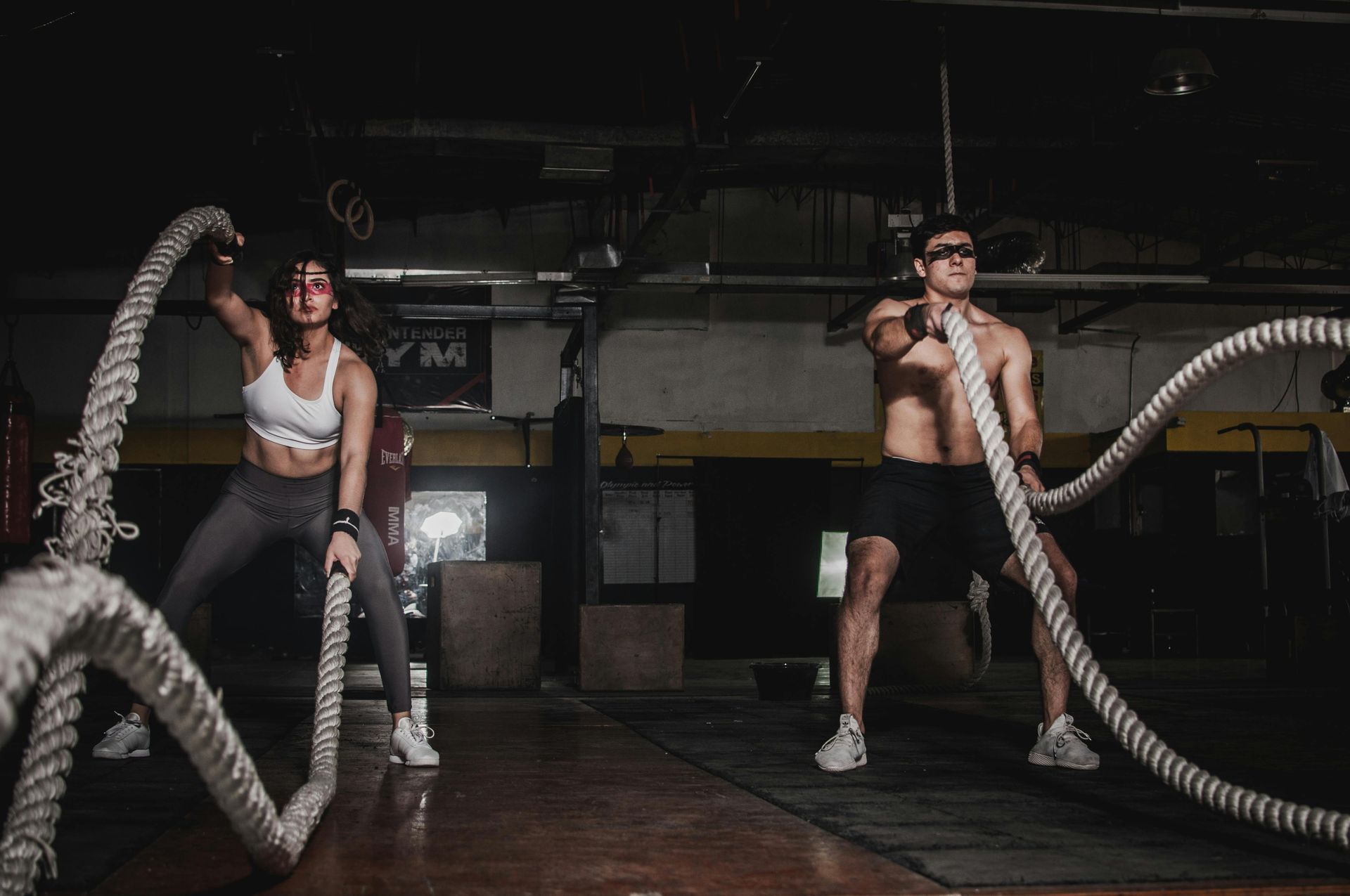
Starting a gym is a dream for many fitness enthusiasts, but the journey from concept to reality involves more than just passion. Whether you're planning to open a boutique fitness studio or a full-scale facility, there are several critical factors to consider to set your gym up for success. Here are eight essential things to know before opening a gym: 1. Location is Important, But Not Always Crucial The location of your gym matters, but its importance can vary depending on your business model. If you're not a big-box gym or aren't targeting a specific niche like bodybuilding, powerlifting, or personal training, location might not be your top priority. Similarly, if you're a trainer without an existing client base or a strong online presence, the location can play a more significant role in attracting walk-ins. Otherwise, focus more on what you offer rather than where you're located. 2. Financing: Don't Cash Strap Your Business While taking out a loan can be intimidating, it’s often a better option than using up all your cash reserves. Having cash on hand can be a powerful tool to help build and sustain your business. This doesn’t mean financing is for everyone, but it’s worth considering based on where your funding is coming from. Weigh your options carefully to ensure you have enough liquidity to handle the unexpected. 3. Build a Strong Community Building a community should be at the forefront of your business strategy. Unlike bigger gyms like Planet Fitness or LA Fitness, smaller gyms have the advantage of offering a personal touch and fostering strong relationships with members. A loyal community not only retains members but also helps spread the word about your gym organically. 4. Consistent Marketing is Key Marketing should be an ongoing effort, not a one-time task. It’s crucial to constantly remind people about your services and what makes your gym unique. Use all available resources—both free and paid—to get your name out there. Whether it’s social media, local partnerships, or online ads, consistent marketing can help you stay top of mind in a competitive industry. 5. Understand Client Retention Rates Statistics show that in personal training environments, you can lose 30%-40% of your clients within the first year. In more open, less personalized gym settings, the attrition rate can be as high as 50%-60%. Understanding these numbers is crucial for planning your marketing and member engagement strategies to minimize churn and maximize retention. 6. Expect the Unexpected When opening a gym, you should count on things not going as planned. Delays in construction, equipment arriving late, or unexpected repairs can—and often will—happen. Having a flexible mindset and a contingency plan can help you navigate these challenges without derailing your opening plans. 7. Have a Nest Egg It’s wise to have at least three months' worth of hard costs saved up to cover unforeseen expenses. Whether it’s a bad month, an unexpected utility bill, or an emergency repair, having a financial cushion can be the difference between weathering a storm and closing your doors. 8. Negotiate Your Lease Like Your Business Depends on It When negotiating your lease, approach it as if your business's survival depends on it—because it does. Don’t let the excitement of starting your own gym cloud your judgment. Take the time to negotiate the best deal possible and fully understand the terms of your lease. Talk to potential neighbors, investigate the landlord's reputation, and ensure every detail is clear, especially regarding responsibilities like plumbing. 9. Build Your Gym for Others, Not Just Yourself While your gym should reflect your personality, it’s essential to prioritize the needs of your members over your own preferences. The equipment and layout should cater to what your members want and need. Your personal must-haves should come second to ensuring that your gym meets the expectations of your target audience. Final Thoughts Opening a gym is an exciting endeavor, but it requires careful planning and a strategic approach. By focusing on these eight areas, you'll be better prepared to navigate the challenges and build a successful fitness business that thrives in the long run. For more tips on opening a gym and building a successful fitness business, stay tuned to the CSM Fitness USA blog or reach out to us for personalized advice and support. Please feel free to ask us any questions or advice that is always free no strings attached !
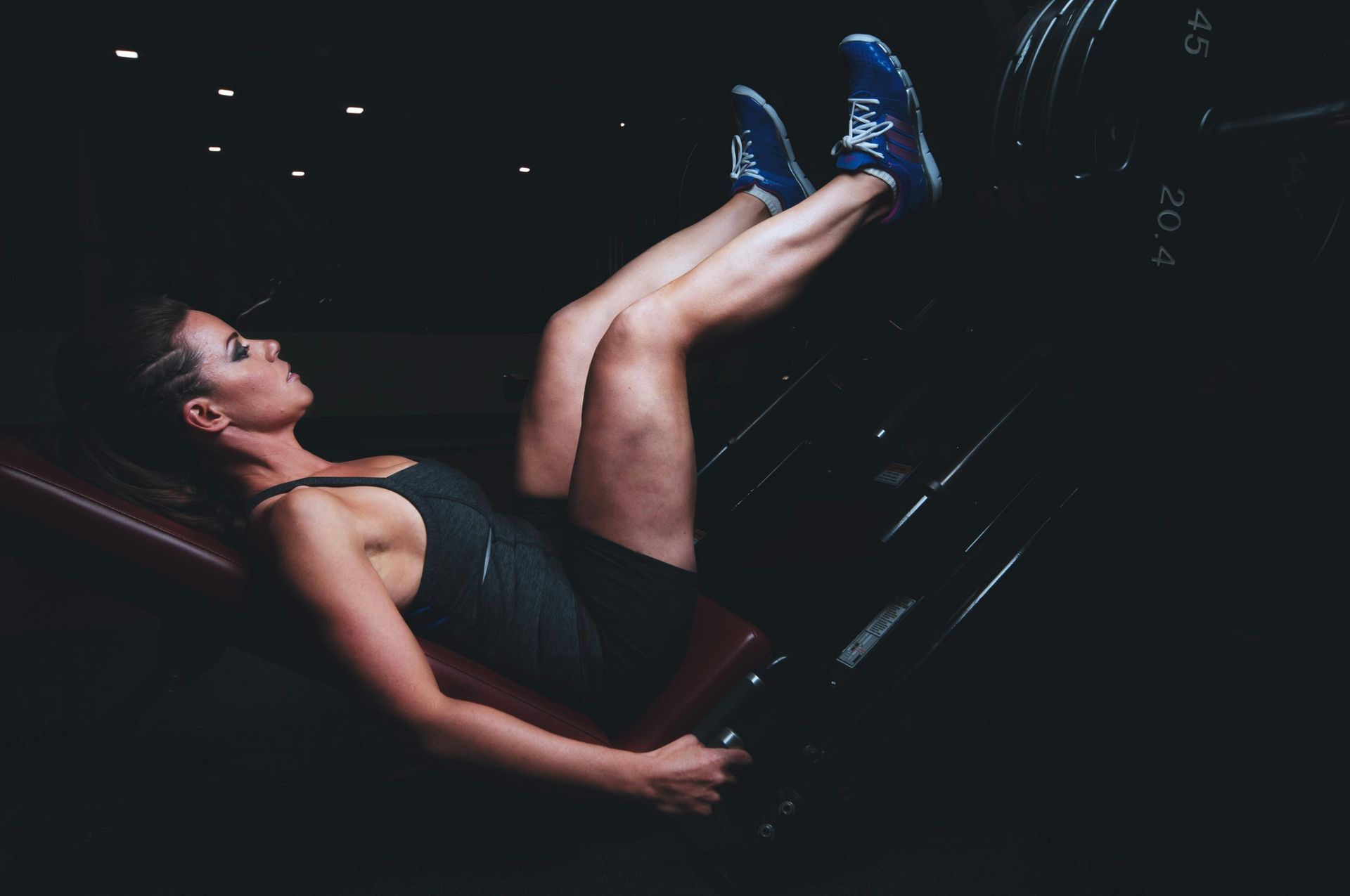
In an era where online shopping has become the norm, the importance of supporting local businesses can sometimes be overlooked. When it comes to purchasing fitness equipment, buying local offers several significant benefits that are worth considering. This article delves into the reasons why buying local matters for fitness equipment and how it can positively impact your purchase experience and community, with a specific focus on CSM Fitness and their local and USA-wide coverage area. 1. The Benefit of Physical Inspection One of the primary advantages of buying fitness equipment locally is the ability to physically inspect the product before making a purchase. This hands-on approach allows you to: Assess Quality: Touch, feel, and try out the equipment to ensure it meets your standards and needs. Make Informed Decisions: If you're unsure about a particular piece of equipment, being able to see and test it in person can greatly influence your decision-making process. 2. Superior Service Accessibility Local vendors often provide services that are difficult for distant suppliers to match. These services can include: Personalized Delivery Options: Local businesses can offer tailored delivery services, such as white glove delivery, ensuring the equipment is set up exactly where you need it. Quick and Reliable Support: If any issues arise with the equipment, local businesses can provide prompt and efficient support, saving you time and hassle. 3. Supporting the Local Economy When you choose to buy from local businesses, you are not just purchasing a product; you are supporting your community. The benefits include: Job Creation: Local businesses create jobs and contribute to the economic stability of your community. Economic Growth: Money spent at local businesses tends to stay within the community, helping to stimulate local economic growth and development. 4. Building Trust and Relationships Buying local allows for direct interaction with the business, fostering trust and reliability. Consider these points: Reputable Businesses: It is easier to verify the credibility of local businesses through direct interaction and local reviews. Long-Term Relationships: Building a relationship with a local vendor can be beneficial for ongoing support and advice, especially if you are a repeat customer or running a fitness-related business. 5. Personalized Advice and Community Connection Local businesses often provide personalized advice that can be invaluable. They understand the specific needs of their community and can offer tailored recommendations. This connection to the community can lead to: Better Customer Service: Local vendors are more likely to go the extra mile to ensure customer satisfaction. Community Engagement: Supporting local businesses helps strengthen community ties and encourages a supportive local environment. CSM Fitness Local and USA Coverage Area CSM Fitness is a prime example of a local business providing top-notch service and support for fitness equipment. Their coverage area includes extensive local and nationwide support: Local Coverage Area: Connecticut: Providing comprehensive service and support throughout the state. Massachusetts: Offering personalized service and delivery to fitness enthusiasts in this region. Rhode Island: Extending support to customers with reliable and prompt service. New Hampshire: Catering to the fitness community with dedicated service and support. By covering these areas, CSM Fitness ensures that their customers can benefit from the advantages of buying local, including personalized service, quick support, and the opportunity to inspect equipment before purchase. Conclusion While the convenience of online shopping is undeniable, the benefits of buying local for fitness equipment are substantial. From the ability to physically inspect products to receiving superior service and supporting the local economy, buying local offers a more personalized and community-focused shopping experience. Next time you're in the market for fitness equipment, consider giving your local businesses a chance. Not only will you receive quality products and services, but you'll also be contributing to the growth and vitality of your community. With CSM Fitness's extensive local and USA-wide coverage area, you can be assured of receiving top-tier support and service for all your fitness equipment needs.
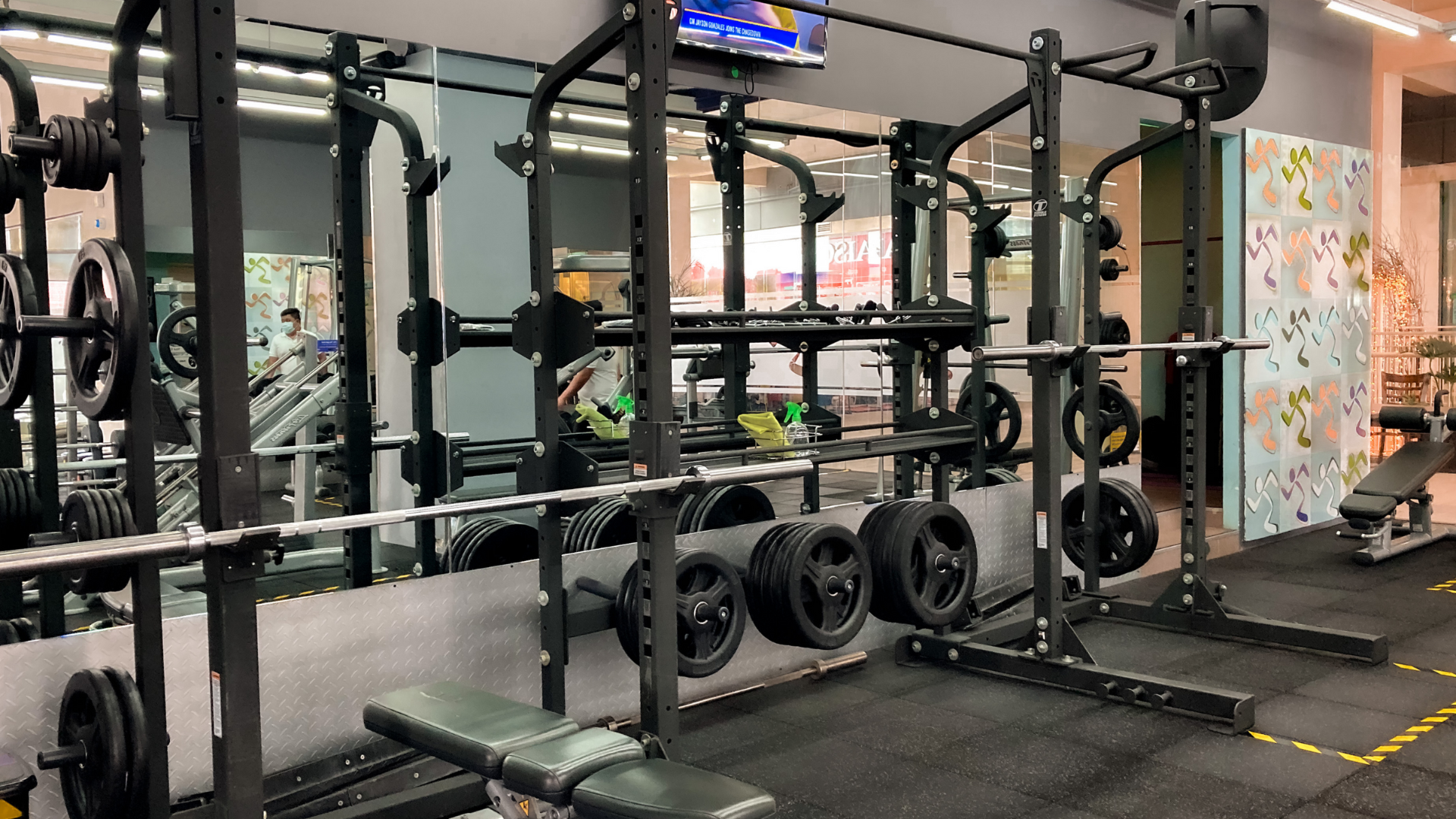
Setting up a home gym or upgrading your fitness equipment can be a significant investment. One option to consider is purchasing used gym equipment. But is it worth it? In this blog, we explore the advantages and disadvantages of buying second-hand gym gear to help you make an informed decision. The Advantages of Buying Used Gym Equipment Cost Savings One of the most compelling reasons to buy used gym equipment is the potential for substantial cost savings. Used equipment can be up to 50% cheaper than new, allowing you to stretch your budget further. This means you can afford higher-end equipment or add more variety to your home gym without breaking the bank. Quality Check When buying used equipment, it's crucial to inspect it thoroughly to ensure it's in good condition. Look for signs of wear and tear, test the equipment for functionality, and ask about its history of use. Quality used gym equipment from reputable sources can offer almost the same performance and durability as new items. Trusted Sellers Finding reliable sources for used gym equipment is key to a successful purchase. Reputable sellers, like CSM Fitness USA, offer well-maintained and thoroughly inspected equipment. Buying from a trusted source reduces the risk of purchasing faulty or unsafe equipment. Potential Downsides of Used Gym Equipment Hidden Issues Used equipment may come with hidden issues such as wear and tear, missing parts, or previous improper maintenance. It's essential to thoroughly inspect and test the equipment before buying. If possible, try to obtain a warranty or guarantee from the seller. Maintenance and Repairs Used gym equipment may require more maintenance and occasional repairs compared to new equipment. It's important to factor in these potential costs when considering your budget. Regular maintenance, such as lubrication and part replacement, can help extend the lifespan of your equipment. Tips for Buying Used Gym Equipment Research : Understand the market value and common issues associated with the equipment you're interested in. Inspect Thoroughly : Check for signs of excessive wear, rust, or damage. Test the equipment to ensure it's functioning correctly. Ask Questions : Inquire about the equipment's history, including how often it was used and why it’s being sold. Negotiate : Don’t be afraid to negotiate the price, especially if you identify any minor issues that you can fix yourself. Maintenance Plan : Have a plan for regular maintenance to keep your equipment in top shape. Conclusion Buying used gym equipment can be a smart way to save money while still achieving your fitness goals. By carefully selecting quality pieces from reputable sellers and maintaining them properly, you can enjoy a fully equipped home gym at a fraction of the cost. Visit Our Website: CSM Fitness USA Follow Us on Social Media: Instagram: @csmfitnessusa Facebook: CSM Fitness USA YouTube: CSM Fitness USA Explore our wide range of high-quality used gym equipment and start building your dream home gym today!
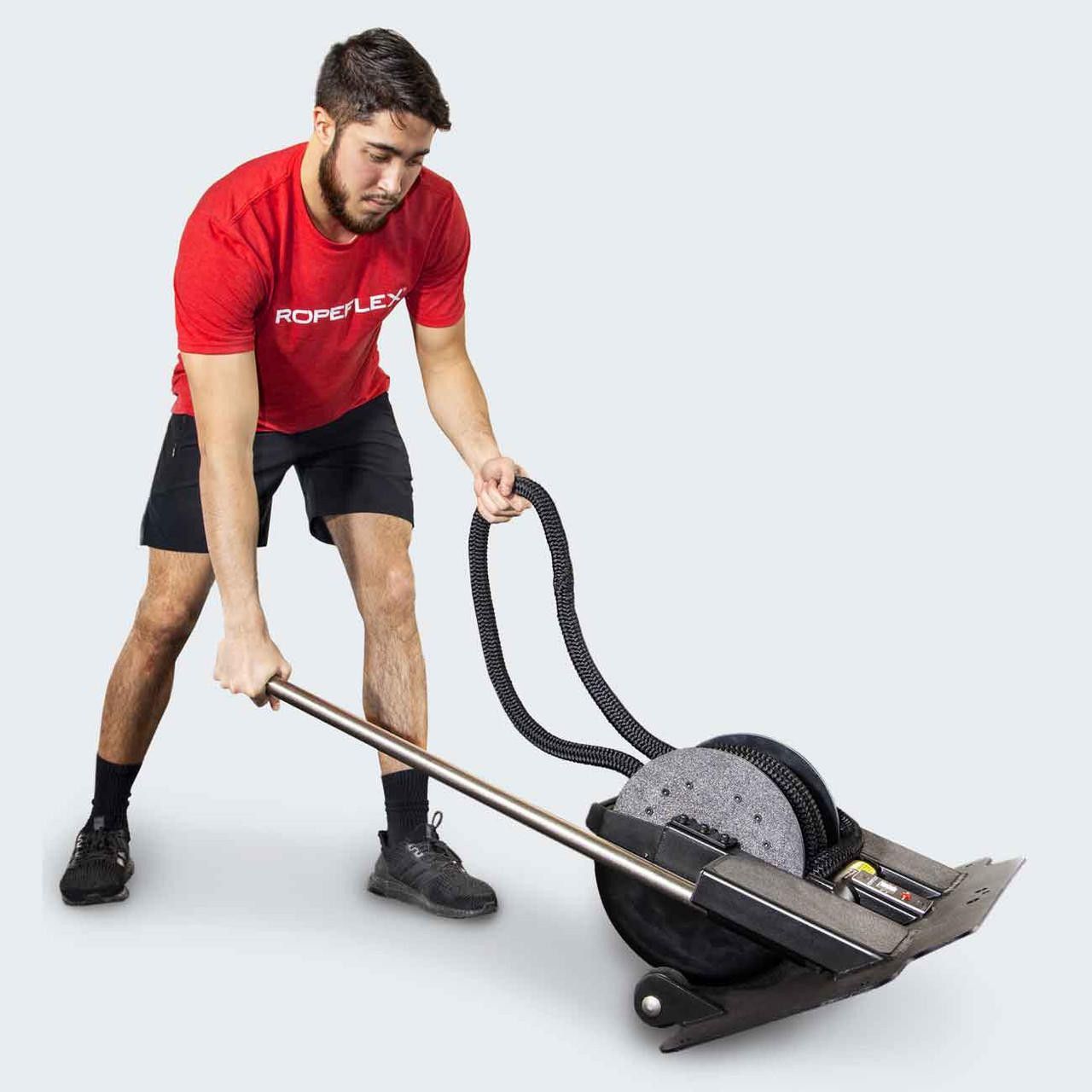
Welcome to the CSM Fitness USA blog! Today, we're diving into the world of functional trainers. Whether you're setting up a home gym or outfitting a commercial facility, understanding what makes a functional trainer unique and how to choose the right one is crucial. Let's explore the essential features, benefits, and recommendations for these versatile machines. What is a Functional Trainer? A functional trainer is a piece of gym equipment designed for a wide range of exercises. It typically features two weight stacks, pulleys, and sometimes a pull-up bar. These machines come in various shapes and sizes, but the primary configurations are H-pattern or V-pattern stacks that can fit in different spaces, including corners or standalone setups. Benefits and Versatility Functional trainers are incredibly versatile. They allow users to perform numerous exercises, making them suitable for both home gyms and commercial settings. Personal trainers and fitness enthusiasts alike can benefit from the functionality and flexibility these machines offer. Whether you're working out at home or in a professional studio, a functional trainer can cater to your fitness needs. Key Features to Consider When shopping for a functional trainer, here are the key features you should consider: Weight Stack Size: The weight stack size can vary from 100 to 300 pounds. The weight ratio (e.g., 2:1, 3:1) affects the actual resistance you experience. A higher weight stack typically means a higher cost, but it provides more options for progression and strength training. Machine Height: The height of the machine is essential, especially if you're setting up in a space with low ceilings, such as a basement. Home models like the Bodycraft HFT, which is 82 inches tall, are designed to fit in smaller spaces. Accessories and Usability: Look for models that come with various attachments and an instruction manual for different exercises. This can be particularly helpful if you're new to using a functional trainer and need guidance on maximizing its potential. Budget and Quality Investing in a quality functional trainer is crucial. Cheaper, knock-off brands might save you money upfront, but they often lack durability and functionality. As Jose Hernandez, owner of CSM Fitness USA, shares, it's better to invest in a reliable brand that will last. He recounts a story of a customer who bought a low-cost functional trainer from a big-box store, only to find it inadequate and eventually had to purchase a higher-quality machine. Recommendations for Different Settings Home Use: For home setups, shorter models like the Bodycraft HFT are ideal due to their compact size. They fit easily in basements or corners of rooms, making them perfect for residential use. Commercial Use: Taller models with larger weight stacks, such as those from Nautilus or Life Fitness, are better suited for commercial facilities. These machines are designed to handle heavier use and offer more advanced features. Exercise Tips Functional trainers are great for a variety of exercises. Jose Hernandez enjoys using them for chest and shoulder workouts. Golfers can also benefit from functional trainers by performing specific swing training exercises. The constant tension provided by the pulleys makes these machines effective for both strength and functional training. Product Options At CSM Fitness USA, we offer a range of functional trainers to suit different needs: Bodycraft HFT : Ideal for home use due to its compact size and comprehensive exercise manual. Nautilus Freedom Trainer: Features moving arms for more dynamic workouts. Bodycore Dynamic Trainer : Combines a functional trainer with a half rack, offering versatility for various exercises. Spirit Functional Trainer: Sleek and clean design, perfect for high-end home gyms and commercial facilities. Conclusion Choosing the right functional trainer depends on your specific needs, space, and budget. Investing in a quality machine will provide long-term benefits and versatility for your fitness journey. If you're in the market for a functional trainer, consider visiting CSM Fitness USA for expert advice and top-notch equipment. Thank you for reading our blog! Stay tuned for more fitness tips and equipment insights from CSM Fitness USA. If you have any questions or need further assistance, don't hesitate to reach out.
